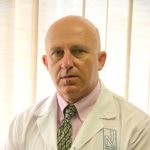טמוקסיפן
דיון מתוך פורום בריאות השד
האם ידוע לכם על אינטראקציה בין טמוקסיפן וציפרלקס?
מירי שלום יש הזהרה כללית שיכול להיות שתרופות בכלל מסוג ציפרלקס SSRI יכולים להוריד מעט מהאפקטיביות של הטמוקסיפן בברכה ד"ר תמי קרני
Concurrent Use of Tamoxifen, Antidepressants Associated With Double Risk of Breast Cancer Relapse: Presented at ASCO By John Otrompke ORLANDO, Fla -- June 5, 2009 -- Concomitant use of tamoxifen AND certain antidepressants is associated with a nearly doubled risk of recurrent breast cancer, according to study presented here on May 31 at the 45th Annual Meeting of the American Society of Clinical Oncology (ASCO). Unfortunately, the 2 substances are prescribed together by about one-third of physicians in the study, according to Milayna Subar, MD, Medco Health Solutions, Inc., Parsippany, New Jersey. Dr. Subar AND colleagues analysed data for 10.7 million US health plan members to identify women with breast cancer new to tamoxifen treatment between 2003 AND 2005. "In that period that we looked at, the number of women on tamoxifen altogether was 26,000," said Dr. Subar. "The criteria that we used were that they must have been followed within the database for at least 24 months in a continuous fashion, AND had a medication possession ratio of at least 70%. That boiled the number down to 1,659 patients." Disease recurrence was defined by International Classification of Diseases, Ninth Revision codes OR Current Procedural Terminology codes for mastectomy, lumpectomy, lymph node dissection, OR radiation therapy occurring at least 6 months after the index tamoxifen prescription. The median age was 52 years in the group that did not receive antidepressants, AND 53 years in the group that did receive them. Interventions included mastectomy in 54%, lumpectomy in 36%, AND radiation therapy in 47% of those patients who did not receive antidepressants, AND were 52%, 38%, AND 46%, respectively, in the group that did receive antidepressants. Patients who received a CYP2D6-inhibiting antidepressant had a 2-year recurrence rate of 13.9% versus 7.5% in patients who did not. "We continue to work with patients AND physicians to make sure they do not combine drugs where evidence like this exists showing that the drugs should not be combined," Dr. Subar said.



